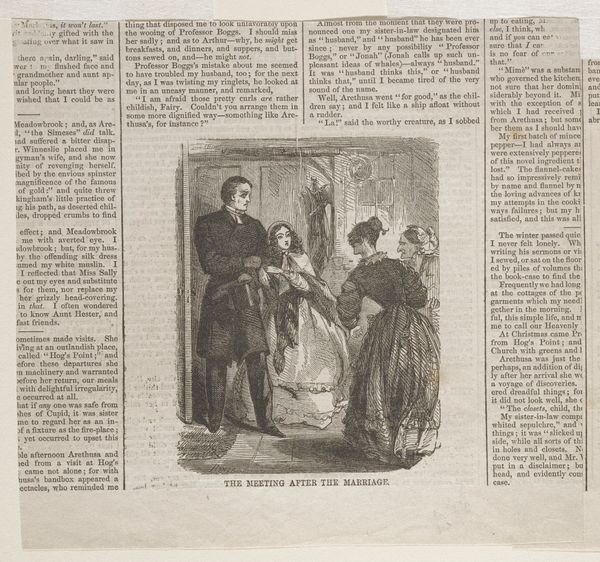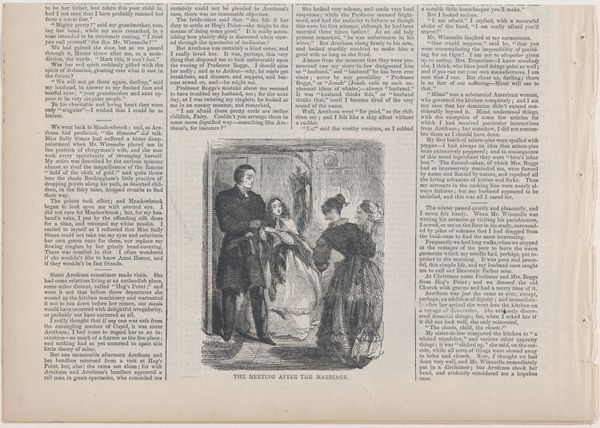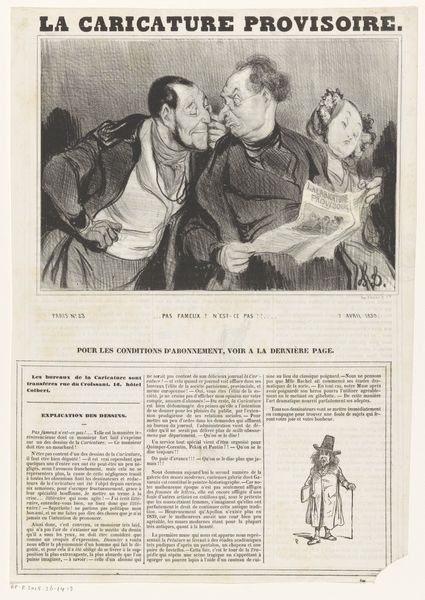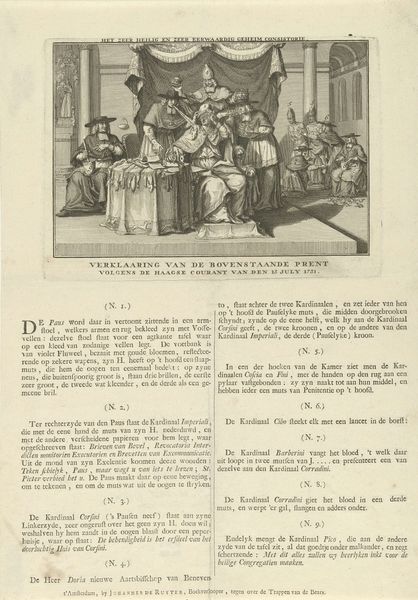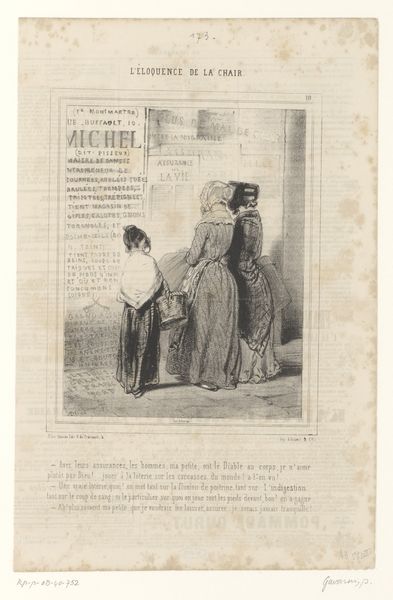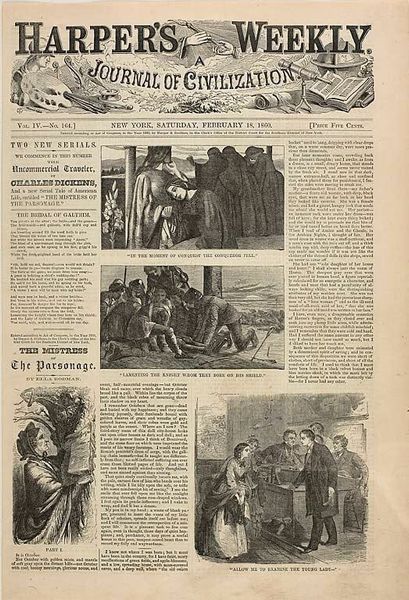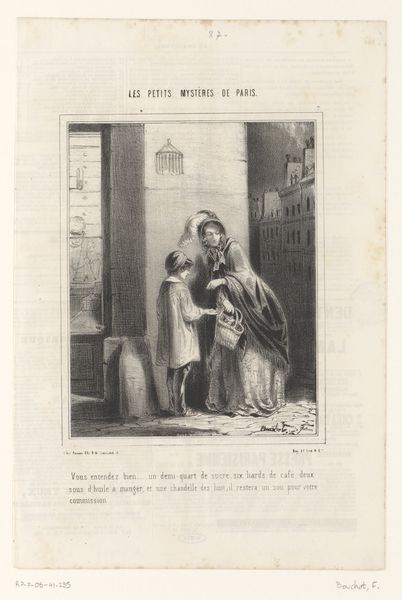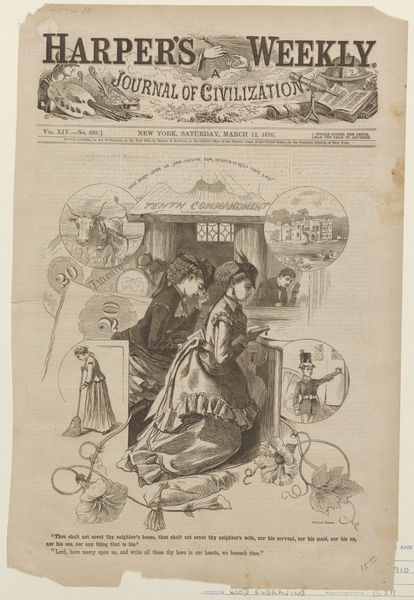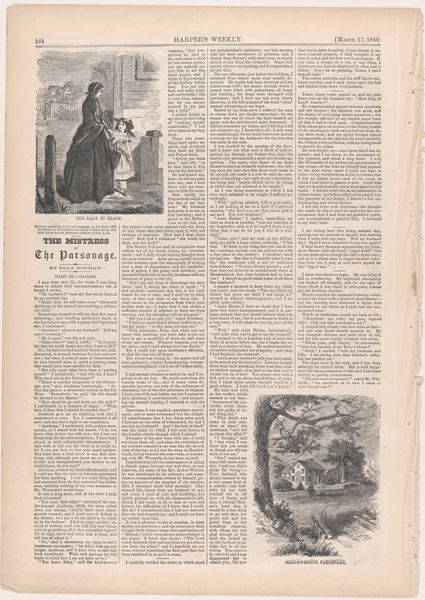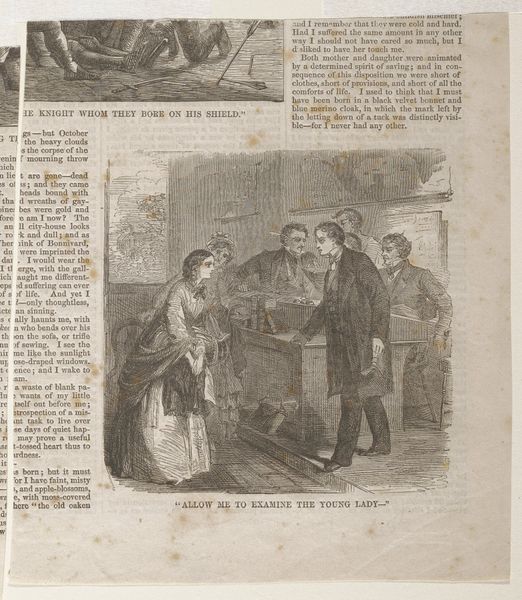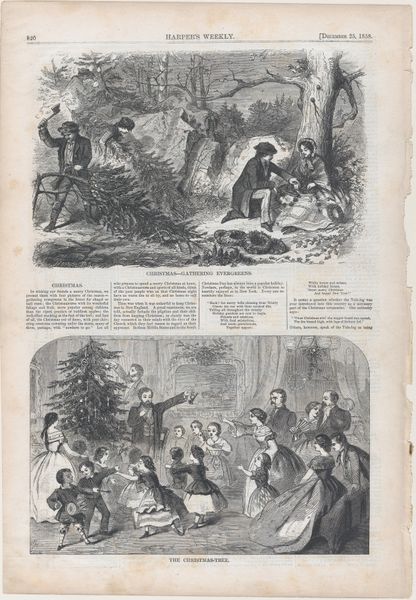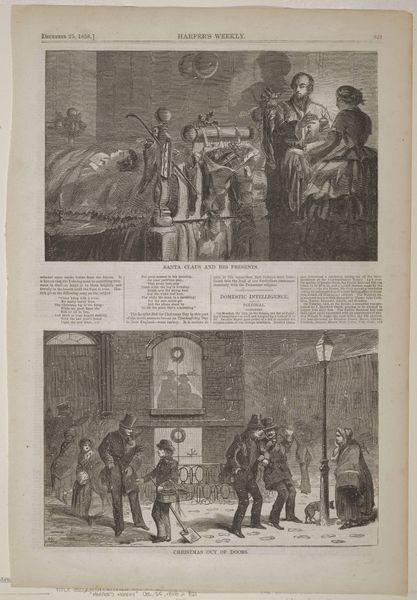
"Allow Me to Examine the Young Lady" (from "The Mistress of the Parsonage," in "Harper's Weekly") 1860
0:00
0:00
Dimensions: image: 4 3/8 x 4 1/2 in. (11.1 x 11.4 cm) sheet: 16 x 11 1/4 in. (40.6 x 28.5 cm)
Copyright: Public Domain
Curator: Winslow Homer's “Allow Me to Examine the Young Lady,” a print from 1860 originally appearing in Harper's Weekly, strikes a familiar Romantic chord, doesn't it? What do you make of this scene? Editor: It has an austere feel, primarily conveyed by the limited palette. The medium, an engraving, naturally lends itself to that, but also reinforces a feeling of control. You see it not only in the clean, precise lines, but the very deliberate staging. It's a fabricated tableau. Curator: Absolutely. And I'd argue the composition amplifies that staging. The men standing, looming even, behind the central figure creates an atmosphere laden with unspoken meaning. Do you feel any power dynamics are at play? Editor: Most definitely! This image points to the societal mechanisms—the material and symbolic pressures— brought to bear on women of this era. It shows how patriarchal structures impacted the very presentation and perception of the self. I can imagine that woman’s corset and the social confinement she would have likely faced. Curator: I agree, she is certainly facing judgment from a group of men, whose gaze is intensely fixed upon her. Their faces betray little, leaving us to interpret the nuances of the scene ourselves. The title seems to give away her lack of agency here. Editor: And how interesting that it's a print, reproduced for mass consumption in a weekly magazine. It suggests that these concerns about feminine identity were widely debated and negotiated in the popular culture of the time. Consider the labor involved: an artist, an engraver, the printing presses, and all that’s to say about industrialization’s impact. Curator: The artist uses the setting itself to deepen the narrative. Notice the bareness, or austerity, of the parsonage depicted. How might it mirror, or influence, the perceived qualities of those who inhabit it? The romantic symbolism heightens the tension in the image, hinting at deeper emotions. Editor: The choice of materials itself reflects societal values, though. In expensive methods would dictate a very different story with entirely different audiences, a far cry from the democratization made possible by a newspaper illustration. Curator: True. The medium does broaden its reach, fostering debate. What appears to be an isolated moment carries resonance. For me, the enduring relevance of “Allow Me to Examine the Young Lady” lies in its ability to question the nature of observation and judgment. Editor: And to highlight how those social forces are intrinsically tied to material means. The making and dissemination, no less than the visual story itself, define the print's enduring meaning and impact.
Comments
No comments
Be the first to comment and join the conversation on the ultimate creative platform.
